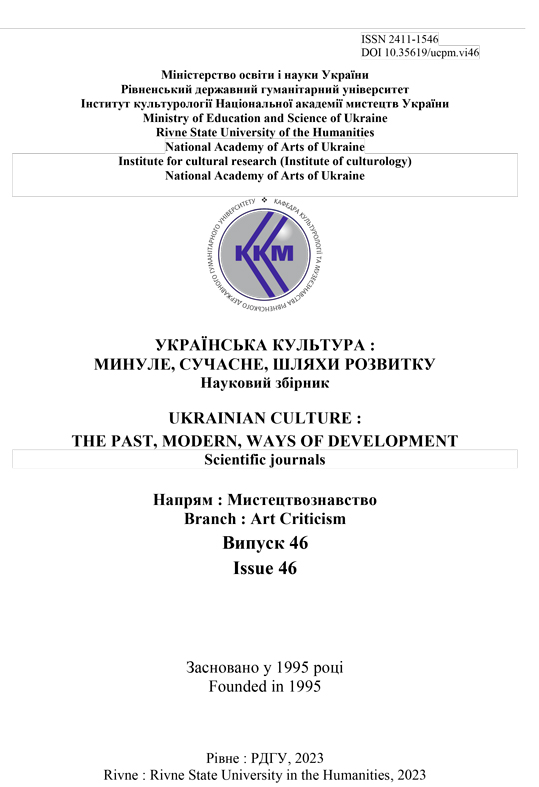«IN THE BEGINNING» BY EINOJUHANI RAUTAVAARA AS A RESULT OF THE COMPOSER'S CREATIVE SEARCH
DOI:
https://doi.org/10.35619/ucpmk.vi42.561Keywords:
concert «In the beginning», autocitation, reminiscence, Einojuhani Rautavaara, Inkinen.Abstract
In the environment of Ukrainian musicology, the creative legacy of contemporary Finnish composer Einojuhani
Rautavaara remains insufficiently studied. The majority of his sheet music, especially from the last years of his life, is
in limited access, including the object of this research, the concert-opener «In the beginning», the analysis of which was
performed first. This determines the relevance and novelty of this study.
The main objective of the publication is to identify in E. Rautavaara's concerto «In the beginning» features of
continuity, common linguistic resources, patterns, ways of reminiscence, derived from the material of previously
written opuses of the 1970 s.
ISSN 2411-1546 Розділ I. Історико-мистецька спадщина України в контексті світового культурного простору 85
Conclusions. In the early 1970 s the sources of E. Rautavaara's inspiration are the materials he collected on an
ornithological expedition in the northern territories of Finland, which are reinforced by impressions of the composer's
acquaintance with the historical and cultural heritage of his country. These ideas are realized in two works of 1972 - the
concerto for recording of birdsong with orchestra «Cantus Arcticus» and «Garden of Spaces» for orchestra. In the musical
texture of the named pieces, E. Rautavaara first engages intonation and melodic formulas, which would later find versatile
embodiment and development in a significant array of works for orchestra, among them: «Ballade» for harp and strings
(1973), Concerto for flute and orchestra «Dances with the Winds» (1975), Symphony No. 5 (1985), Clarinet Concerto (2001).
The composer's last orchestral work «In the beginning», symbolic both at the level of genre designation and
program title, becomes an incarnation of the final result of E. Rautavaara's continuous process of creative search. In it,
as reminiscences, author's «references» to his own works from the early period, are embodied principles of sound
organisation individually selected by him, in particular, use of a specific harmony model from the series of reduced,
symmetric «tone-and-a-half tone» chains, application of major-minor single key correlations, especially in the mid form
constructions, introduction of elements of bird-song imitation into the musical texture and penetration of rhythmical
features of Finnish runic versification into the melodies. In the concerto there is also an autocitation from Fantasia
(2015) written in the late years of his creative work. In general, in the flow of dynamic and continuous development on
the form level, there is a tendency to its openness and elaboration.




